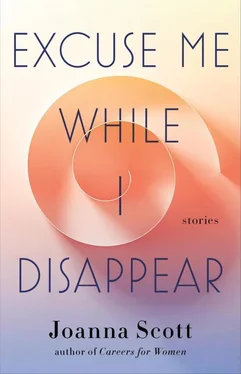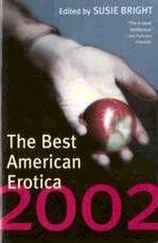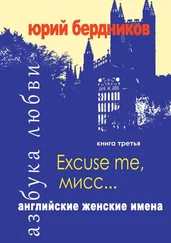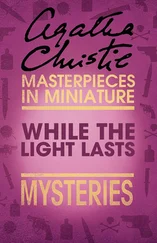I looked from figure to figure and back and forth between the two paintings. It was hard to believe that I hadn’t noticed the most obvious difference right away: where there are a handful of large, bejeweled books in the Vivarini painting, in Giambono’s copy there are books everywhere. An ox, a lion, an eagle, an angel, saints and angels and members of the heavenly choir—they are all holding books. Many of the books are pocket-sized and appear to be bound in undecorated cloth.
There is another crucial difference. A few of Vivarini’s figures hold books, but they aren’t reading them. They are looking elsewhere, up toward the source of divine inspiration. In Giambono’s Paradise, many of the books are open, and they are being read.
Giambono finished his Coronation of the Virgin four years before Gutenberg produced the first Latin grammar with movable type and more than fifty years before the Venetian printer named Aldus Manutius began printing books on his new mechanical press. But the books in Giambono’s painting are the size and shape of printed books that have been mass-produced. Where, I wondered, did all those books come from? Why have so few survived?
If you ever have a chance to travel to Venice, you might want to make a visit to the Accademia and see Giambono’s Coronation of the Virgin for yourself. And, while you’re there, you might want to pop into Venice’s sole German church, the Church of Angelo Custode, and take a look at the handful of old clothbound books locked in a glass bookcase on the second floor. These books, I was told by the guard, were said to have been salvaged from the ashes after a fire that destroyed the Fondaco dei Tedeschi in 1505. Maybe you will succeed, as I did not, in convincing the guard to unlock the bookcase and let you examine the books up close. And maybe you will come up with a different story from the one I am telling.
8.
Let’s get back to Francesco Colonna and Vicenzo Constantini, whose destinies will remain inextricably intertwined. Francesco, as you know, fled from the Fondaco and the angry prelate who came looking for someone to accuse. Vicenzo, in pursuit, took a wrong turn and went in the opposite direction, running in such a blind rage that he fell and sprained his ankle. He was forced to limp back to San Pietro, where he locked himself in his room and passed the night plotting his punishment of the boy who dared to deface a Bible.
Francesco goes on to serve in Giambono’s workshop for another seven years. He is given the job of putting finishing touches on a composition’s minutiae; often he can be found adding words to the open books the artist has included in the painting. Whether or not Francesco is writing anything meaningful doesn’t really matter, since the script is too tiny to read.
The boy is treated kindly by Giambono. Given his important role, he is spared from more beatings by the assistant Zusto, and he is admired by the younger apprentices. It would have been a good life, and Francesco Colonna might have become a fine painter in his own right, perhaps a miniaturist specializing in the illumination of books, if a certain white-robed zealot hadn’t arrived in the workshop one day in 1454 to inquire about a polyptych that Giambono was supposed to be painting.
Francesco hears Vicenzo before he sees him, and he recognizes the voice with the same abrupt certainty with which he recognized the yowl the second time he’d stepped on the tail of the cat. He sees the prelate from behind, in conversation with the artist. He sees the white robes and the shaved head. To save his own hide as well as to protect Giambono’s good name, Francesco hides from sight while Vicenzo is present, and the next day he resigns from his position in the workshop.
From then on, his main aim in life is to keep away from Vicenzo Constantini. And what is the best place to hide from an angry prelate? In a monastery, of course! And so Francesco Colonna boards a boat and leaves Venice for Treviso, where he says goodbye to his family and begins the long trek into the mountains. He arrives two weeks later at a Dominican monastery tucked into an outcrop in the Dolomites. After his faith is evaluated and his work experience assessed, he is approved to receive the necessary instruction to prepare him to take holy orders, and he is appointed to that most common of monastery jobs: copying books in the scriptorium.
For the next ten years, Francesco copies books, applying himself to the task with a force of concentration that anyone who knew him in his youth would have thought impossible. Over the course of the decade, he copies one thousand books, word for word. He makes no errors and adds no reflections of his own. He copies accurately, with a reverence for the original that has come to him in his maturity.
If you’re an ordinary Dominican monk in the early Renaissance living in a monastery in the mountains of northern Italy, you get used to a simple existence. Your meals consists of bread, a soft Robiola cheese, and watery wine. You speak in soft voices and spend three hours every morning on your knees, in prayer. You wake long before dawn and retire shortly after vespers. You do your work in silence, drawing your ink across the page, stringing letters together to make words. In most cases, history will not remember you.
Francesco Colonna would cheerfully have been forgotten. He was happy as a monk, he felt appreciated for his work and was beloved among his Dominican brothers. But he couldn’t copy without reading, and he couldn’t read without imagining. Over the years, his well-nourished imagination grew strong and agile, energetic to the point of explosive restlessness, until the day came when he couldn’t contain it any longer. Without offering an explanation, he put aside the book he’d been copying, found himself a bundle of paper, folded it into a quire, dipped his reed into the ink, and gave himself over to his dream.
He dreamed that he closed his eyes and fell asleep, and in his sleep he had a dream. He was lost in a dense, thorny forest. Desperate with thirst, he followed the sounds of trees breaking in a whirling wind and the echo of water tumbling over rocks. He came to a raging river and knelt upon the bank. He scooped water into his cupped hands but stopped when he heard the sound of a strange, shrill, ethereal singing. Spellbound, he let the water spill between his fingers, and he stumbled off in the direction of the music. When he could walk no further he lay down beneath a towering oak tree, licked the moisture off its green leaves, then fell asleep and dreamed of being overcome by a love so strong it felt as if his heart were made of fire.
He went on dreaming and dreaming. For months, no one could wake him.
We don’t know how long it actually took Francesco Colonna to write his Hypnerotomachia Poliphili, translated into English as The Strife of Love in a Dream . There is even some debate about the origins of the book, with some scholars speculating that it was written by a different Francesco Colonna who had nothing to do with the Dominicans and instead was a rich prince from Rome. I find this theory as unconvincing as it is unsubstantiated. Who else but a cheerful monk who in his former life had copied books at the Fondaco dei Tedeschi and served as an apprentice to Michele Giambono could have imagined the strange, fantastic world of the Hypnerotomachia, with its forest and gardens and ruins and nymphs and monsters? Who else but a scribe who happened to have read through the equivalent of an extensive library would fill his own book with made-up words and multiple languages? Who else but a habitual dreamer would have claimed in his preface that all human things are revealed to be aught but a dream ? Who else but the mischievous boy who used to deface Bibles would have preferred to publish his book anonymously but still signed his name in an acrostic, using the first letter of every chapter? Who else but the Francesco Colonna of this story would have written a book that is widely agreed to be impossible to read but is still read to this day?
Читать дальше












